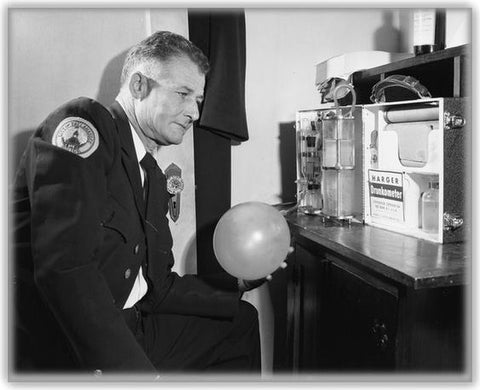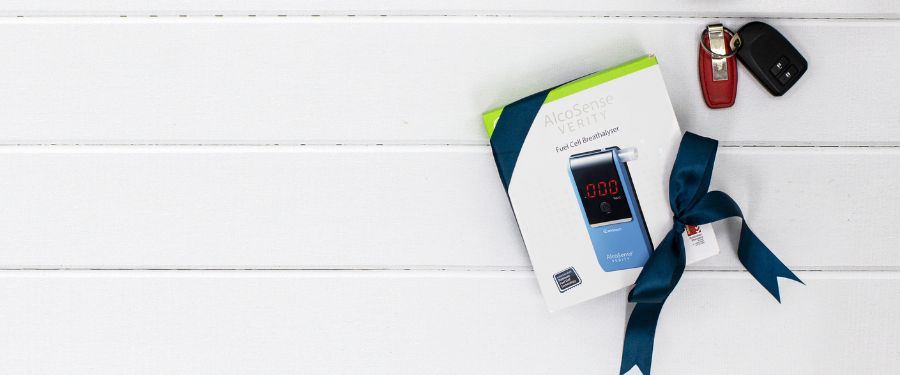In the early 1930s, an invention that proved to be revolutionary emerged, which we know today as the modern-day breathalyser. As the dangers of drunk driving became increasingly apparent, the need for an accurate and efficient method to measure blood alcohol concentration (BAC) grew in importance.
With their introduction, breathalysers aimed to provide law enforcement and individuals with a reliable tool to assess a test subject’s intoxication level. This, in turn, helped to promote safer roads and responsible alcohol consumption.
In this blog post, we’ll be discussing the early methods of alcohol testing, how it developed and how far breathalysers have come in promoting road safety in Australia and beyond.
Early methods of alcohol testing
Alcohol has been embedded in human cultures across the world for centuries, but it wasn’t until the early 20th century that concerns about alcohol safety became a concern, particularly in relation to impaired driving.
To address the issue, law enforcement during the time enforced two notable methods to detect alcohol impairment which were sobriety tests and urine tests. Sobriety tests included an evaluation of physical coordination and balance, as alcohol consumption had an effect on motor skills.
Seeing as this method relied on an officer’s judgement alone, it lacked scientific objectivity.
Swedish physiologist Erik Widmark also developed a sobriety test that relied on a fingertip blood sample to estimate intoxication levels, but his method was not well received.
Urine tests were also introduced as an early method of alcohol testing and is still widely used today, albeit mainly for drug testing. Urine tests aim to detect alcohol metabolites in urine. Although urine tests were able to detect whether or not alcohol had been consumed, they could not determine real-time measurements of impairment.
From here, it was clear that both testing methods had their limitations. The need for an alcohol testing device arose due to growing concerns about impaired driving, public safety and the absence of a simple and fast way to detect a test subject’s intoxication level.
These early methods, however, proved to be a stepping stone for the development of breathalysers.
READ MORE: What is BrAC?
The Drunkometer

Photo from Celebration Marketing on Pinterest
In 1931, Dr. Rolla Neil Harger, who was an assistant professor at the Department of Biochemistry and Pharmacology at the Indiana University School of Medicine, invented the early breathalyser that was comedically dubbed a drunkometer.
The device operated on the principle of chemical reaction to determine the presence of alcohol in a person’s breath. It required the test subject to blow into a balloon. The collected breath sample was then bubbled through a mixture of chemicals.
The reaction between the chemicals and the breath alcohol caused a colour change. The extent of the colour change would indicate the approximate alcohol concentration in the breath. However, it did not provide an exact BAC reading. Instead, it provided a qualitative assessment of the presence of alcohol and required a trained operator to administer the test.
Additionally, the device was also complex and involved multiple steps, making it time-consuming and less suitable for on-the-spot testing. The Drunkometer did, however, lay the foundation for the development of breathalysers we see today and set the stage for the scientific approach to breath alcohol testing.
The breathalyser
The modern-day breathalyser that we see used today was first developed in 1954 by Robert F. Borkenstein, an Indiana native who formerly worked with the state police and even collaborated with Dr Harger to help develop the drunkometer.
This led to the invention of the smaller, easier-to-use breathalyser. The breathalyser was more portable and user-friendly compared to the drunkometer. It provided a direct BAC reading which eliminated the need for subjective interpretation. The device became widely used by police officers as a reliable tool for alcohol testing.
In the 1970s and 80s, advancements in technology led to the development of electrochemical fuel cell technology, which, like today, also uses fuel cells. These breathalysers use a fuel cell sensor to measure the electrical current generated by the oxidation of alcohol molecules in the breath. The current is proportional to the alcohol concentration, allowing for accurate BAC readings.
Fuel cell breathalysers have become a staple in modern breathalyser technology and is used in both Andatech industrial breathalysers and AlcoSense personal units. Fuel cell breathalysers, including the ones from Andatech, are ethanol specific, meaning that they only detect ethanol, the key ingredient in alcohol, thus reducing the chances of false positives from interfering substances.

READ MORE: Fuel cell vs semiconductor breathalysers
Modern features in breathalysers
Just as the drunkometer evolved into the breathalyser through advancement in modern technology, the breathalyser of yesterday also evolved with technology. As innovation is a core value of Andatech, the organisation, we continue to integrate new technology into our products.
Accurate fuel cell technology
All units, be it personal or industrial, utilise different grades of fuel cell technology to measure a user’s blood alcohol content, ensuring accurate readings at all times. Regular calibration of your Andatech breathalyser will see the initial warranty extended under the Andatech Guarantee.
Mobile phone pairing
Selected AlcoSense breathalysers can now be paired to your mobile phones to save data, share it with friends and family and also take photos as proof of test. The AlcoSense Nexus and Elite 3 BT personal breathalysers are two popular models that possess this feature.
BUY NOW: AlcoSense Nexus and AlcoSense Elite 3 BT
Built-in camera
Built-in cameras have also become a popular feature of many workplace breathalysers, including the Andatech Prodigy 3 breathalyser. The purpose of the built-in camera is to take infallible proof of testing. This way, it will be clear that the intended test subject has taken the test and is ideal for court cases involving alleged alcohol guardians.
LEARN MORE: Andatech Prodigy 3 industrial breathalyser
Data management system
Ideal for industries or organisations with multiple breathalysers across different locations, data management systems like Andalink serve to organise data and store them in a secure cloud location. It’s worth noting that Andalink can be accessed by persons in charge remotely and has also been extended as a free app compatible with personal breathalysers like the Nexus and Elite 3 BT units.
Conclusion
From this discussion, we can see that alcohol breath testing has come a log way from sobriety tests as the breathalysers that can fit in your pocket today can accurately measure BAC levels through a single breath sample.
It’s no doubt that the invention of the drunkometer paved the way for the development of the breathalysers we see today, including the ones from Andatech. The implementation of fuel cell technology made breathalysers more accurate and efficient in detecting alcohol levels, and today, breathalysers continue to evolve.
Features like mobile phone pairing, built-in cameras and data management systems only serve to enhance the functionality and usability of alcohol breath testers.
Browse through Andatech’s wide selection of handheld workplace breathalysers and personal breathalysers to look for the right unit to suit your needs today!





